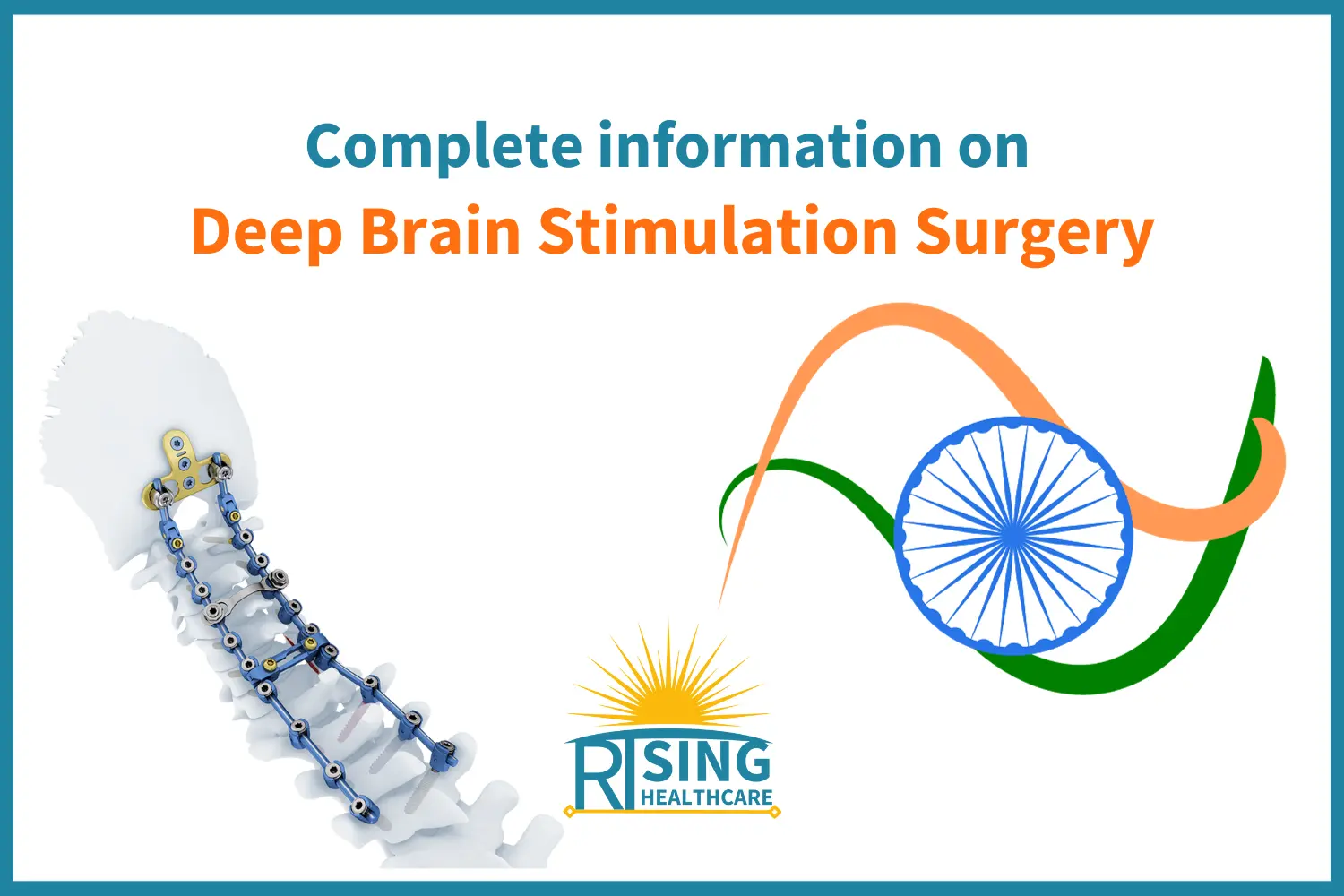
Deep Brain Stimulation Surgery: A Beacon of Hope for Parkinson’s Disease
Introduction
Deep Brain Stimulation Surgery (DBS surgery) is a remarkable medical procedure that offers new hope for individuals battling Parkinson’s disease. This cutting-edge treatment has emerged as a game-changer, significantly improving the quality of life for many patients. In this article, we will delve into the world of DBS surgery, exploring what it is, how it works, and its incredible impact on Parkinson’s disease patients.
Contents
Understanding Parkinson's Disease
Before we dive into the details of DBS surgery, it’s essential to understand Parkinson’s disease. Parkinson’s disease is a neurodegenerative disorder that affects the central nervous system. It primarily manifests as motor symptoms, such as tremors, rigidity, bradykinesia (slowness of movement), and postural instability. These symptoms result from a reduction in dopamine production in the brain.
Dopamine is a neurotransmitter that plays a crucial role in regulating movement and mood. In Parkinson’s disease, the cells responsible for producing dopamine in a part of the brain called the substantia nigra degenerate, leading to a dopamine deficiency. This deficiency disrupts the brain’s ability to control and coordinate movements, causing the hallmark symptoms of Parkinson’s.
Traditional Treatment for Parkinson’s Disease
The conventional approach to managing Parkinson’s disease primarily involves medications, such as levodopa, dopamine agonists, and MAO-B inhibitors. These drugs aim to alleviate symptoms by either increasing dopamine levels in the brain or enhancing its effects. While these medications can be effective in the early stages of the disease, they often become less reliable over time, leading to fluctuations in symptom control and the emergence of side effects.
As Parkinson’s disease progresses, some patients may also benefit from physical therapy and lifestyle modifications. However, these interventions may not provide the desired level of relief, especially in advanced stages of the disease.
Enter Deep Brain Stimulation Surgery
Deep Brain Stimulation Surgery (DBS surgery) is a surgical procedure designed to alleviate the symptoms of Parkinson’s disease, among other neurological conditions. It is often considered when medication alone no longer provides adequate symptom control or when medication-related side effects become problematic.
What Is It?
Deep Brain Stimulation Surgery involves the implantation of a small, battery-operated medical device known as a neurostimulator or brain pacemaker. This device is surgically placed in the chest or abdomen, and its thin wires, or leads, are carefully threaded into specific regions of the brain. The neurostimulator emits electrical impulses to these targeted brain areas, modulating their activity and helping to alleviate Parkinson’s symptoms.
Surgery for Parkinson's Disease: The Procedure
The DBS surgery procedure can be broken down into several key steps:
a. Preoperative Evaluation: Before the surgery, patients undergo a comprehensive evaluation to determine if they are suitable candidates for DBS. This evaluation includes neurological assessments, imaging scans (such as MRI or CT scans), and psychological evaluations.
b. Placement of the Neurostimulator: During the surgical procedure, the neurosurgeon places the neurostimulator device under the skin, usually in the chest or abdomen. This device contains a battery and a computerized generator that controls the electrical impulses.
c. Implantation of Leads: Thin wires, called leads, are carefully implanted into the brain. The placement of these leads is guided by real-time imaging to ensure precision. The leads are connected to the neurostimulator device.
d. Programming and Testing: After the surgery, the neurostimulator is programmed to deliver electrical impulses at specific frequencies and amplitudes. The patient and medical team work together to fine-tune these settings to optimize symptom control.
e. Follow-Up Care: Regular follow-up appointments are crucial to monitor and adjust the neurostimulator’s settings as needed. This allows for ongoing symptom management and ensures the best possible outcomes.
DBS Procedure: Life-Changing Benefits
DBS surgery offers a multitude of life-changing benefits for individuals with Parkinson’s disease:
a. Improved Motor Control: One of the most significant advantages of DBS surgery is the improvement in motor symptoms. Many patients experience a significant reduction in tremors, rigidity, and bradykinesia, allowing them to regain greater control over their movements.
b. Medication Reduction: DBS surgery often allows for a reduction in Parkinson’s medications, which can decrease the side effects associated with these drugs. This reduction in medication can lead to a better quality of life for patients.
c. Enhanced Quality of Life: With improved symptom control and reduced medication side effects, individuals undergoing DBS surgery often report a significantly enhanced quality of life. They can engage in daily activities with greater ease and independence.
d. Long-Term Efficacy: DBS surgery has demonstrated its effectiveness in providing long-term relief from Parkinson’s symptoms. Many patients continue to experience benefits for several years, making it a valuable treatment option for the management of this chronic condition.
e. Customized Treatment: DBS surgery is highly customizable. The neurostimulator settings can be adjusted to meet each patient’s unique needs, ensuring personalized and tailored treatment.
Candidate Eligibility for DBS Surgery
Not everyone with Parkinson’s disease is a suitable candidate for DBS surgery. Eligibility is determined through a careful evaluation process, taking into account various factors such as the patient’s age, overall health, and specific Parkinson’s symptoms. Typically, candidates for DBS surgery share some common characteristics:
- Diagnosis of Idiopathic Parkinson’s Disease: Candidates should have a confirmed diagnosis of idiopathic (non-genetic) Parkinson’s disease.
- Inadequate Symptom Control: Candidates should have symptoms that are inadequately controlled with medication or are experiencing medication-related side effects.
- Cognitive and Psychological Evaluation: Candidates undergo cognitive and psychological assessments to ensure they can tolerate the surgical procedure and manage potential psychological effects.
- Realistic Expectations: Candidates should have realistic expectations about the outcomes of DBS surgery, understanding that it can provide significant symptom relief but may not cure Parkinson’s disease.
- Medical Evaluation: A thorough medical evaluation is conducted to assess overall health and suitability for surgery.
It’s important to note that the eligibility criteria may vary slightly between medical centers and may depend on the specific Parkinson’s symptoms and individual patient factors.
Conclusion
Deep Brain Stimulation Surgery (DBS surgery) has emerged as a beacon of hope for individuals living with Parkinson’s disease. This groundbreaking procedure offers a path to improved motor control, reduced medication reliance, and an enhanced quality of life. While DBS surgery is not a cure for Parkinson’s disease, it provides long-term relief and allows many patients to regain a sense of independence and normalcy.
As medical science continues to advance, DBS surgery remains a testament to our ability to harness technology and innovation to improve the lives of those facing debilitating neurological conditions. With ongoing research and refinement of techniques, DBS surgery offers a brighter future for individuals and families affected by Parkinson’s disease. If you or a loved one is living with Parkinson’s, consider discussing the potential benefits of DBS surgery with a qualified medical professional to determine if this life-changing procedure is a suitable option.

